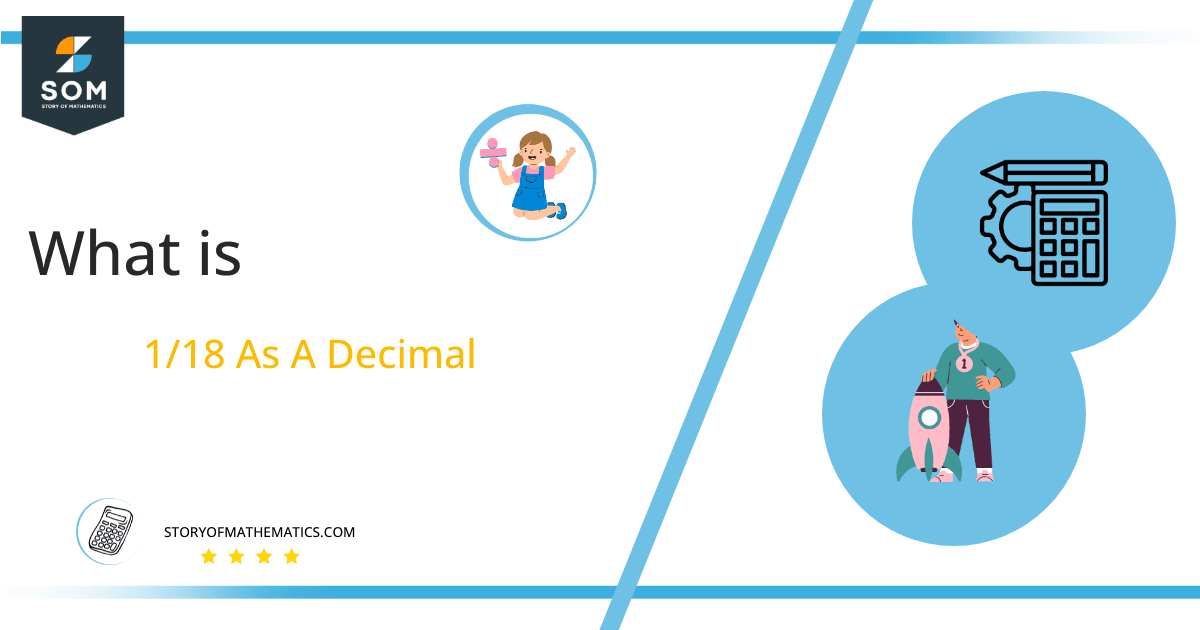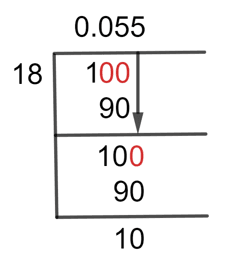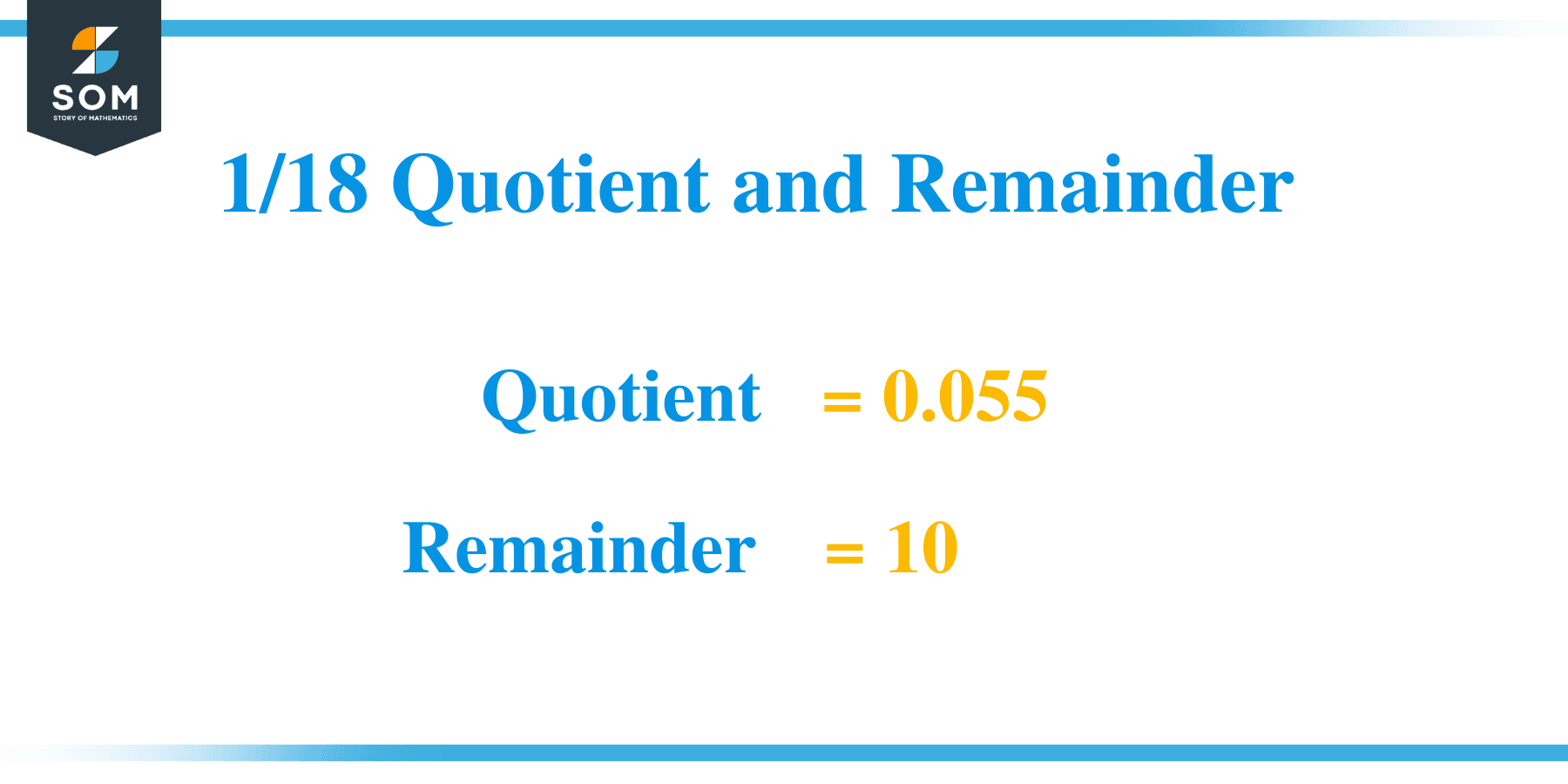What Is 1/18 as a Decimal + Solution With Free Steps

The fraction 1/18 as a decimal is equal to 0.0555555555.
The form p/q is used to represent fractions that have a numerator and a denominator. The numerator and denominator are represented, respectively, by p and q. To make fractions easier to understand, we convert them to decimal values, which requires the division mathematical operation. Of all the mathematical operations, division appears to be the most difficult, yet it is not. The Long Division method is a technique we can use to convert fractions to their decimal equivalents.
The long division technique can be used to determine the decimal value of the given fraction of 1/18.
Solution
It is necessary to comprehend key terms before using the long division approach to discover the solution. Dividend and divisor are key concepts. The dividend and the divisor of a fraction are the numerator and the denominator, respectively. The p in the fraction is known as the dividend, and the q is known as the divisor when discussing the p/q form.
The dividend and divisor for the given fraction of 1/18 are:
Dividend = 1
Divisor = 18
Understanding the word “Quotient,” which is another necessary concept, is necessary. It is the outcome of the long division method when the fraction is expressed as a decimal value.
Quotient = Dividend $ \div $ Divisor = 1 $ \div $ 18
We can solve the fraction through the long division method as below:
Figure 1
1/81 Long Division Method
We have this fraction:
1 $ \div $ 18
Here, the fraction’s denominator is 18, and its numerator is 1. As the numerator is less than the given denominator of the fraction, it is obvious that we cannot divide these numbers directly. Therefore, to proceed with our solution, we must add zero to the right side of the dividend. To do that, we must add the decimal point to the quotient.
The number that is left over when two numbers cannot be divided evenly is known as the Remainder. We now have a remainder of 10 after adding zero, which is still less than the divisor, so we will add one more zero to the right side of the remainder. We will also add one zero to the quotient in addition to adding two consecutive zeros. So now we have a remainder of 100.
100 $ \div $ 18 $ \approx $ 5
Where:
18 x 5 = 90
The remainder we have after this step is 100 – 90 = 10. So, by adding zero to the right side of the remainder, we now have 100 again. And this time we will not add a decimal point to the quotient because it has already been added in the previous step. So the next step will be:
100 $ \div $ 18 $ \approx $ 5
Where:
18 x 5 = 90
So we have a resulting Quotient of 0.055 with a Remainder of 6 for the given fraction of 1/18.

Images/mathematical drawings are created with GeoGebra.
